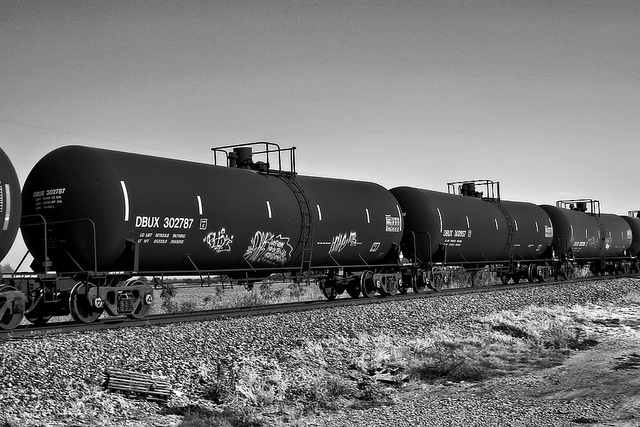72
Number of rail cars carrying Bakken crude oil that crashed into the Quebec community of Lac-Mégantic in July 2013, killing 47 people. (Source)
85
Percentage of tank cars carrying crude oil in North America (at the time of the accident) that were outdated DOT-111 rail cars deemed unsuitable for such transportation. All 72 cars on the MM&A trains that crashed into Lac-Mégantic were old DOT-111s. (Source)
2017
The year Canada will have phased out the old DOT-111s rail cars. They’ll be carrying crude oil on the country’s railway system until then. (Source)
1
Number of people operating that fateful Lac-Mégantic train. With only one other exception, at least two people had typically been required to operate freight trains in Canada. But Transport Canada granted permission to MM&A, the train company whose trains crashed into Lac-Mégantic. (Source)
2009
The year a Transportation Safety Board report warned against one-person crews, saying it can increase the risk for runaway equipment. The report also warned about not having a second person to correct errors. (Source)
900
Percentage increase in oil by rail exports from Canada to the U.S. between 2009 and 2012. (Source)
500
Number of carloads of oil transported by rail in 2009. (Source: Railway Association of Canada, cited Transportation Safety Board report into Lac-Mégantic, 2014, R13D0054, p. 92)
160,000
Number of carloads of oil transported by rail in 2013. (This amounts to 263,000 barrels per day.) That’s set to triple to 510,000 carloads a day by 2016. (Source: Railway Association of Canada, cited Transportation Safety Board report into Lac-Mégantic, 2014, R13D0054, p.92 and source)
19
Percentage cut in the Rail Safety Directorate budget between 2010 and 2014. The Transportation of Dangerous Goods Directorate has seen its annual budget frozen since 2010. (Source)
35
Number of dangerous goods inspectors that the Transportation of Dangerous Goods Directorate (TDG) is expecting to handle Canada’s rapid increase in volume of oil by rail. (Source)
14
Number of carloads of crude oil moving on Canadian railway lines per TDG inspector in 2009. (Source)
4,500
Number of carloads of crude oil moving on Canadian railway lines per TDG inspector in 2013. (Source)
29
Percentage of Canadians who told Environics that they’re confident oil can be safely transported by rail. (Source)
77
Percentage of Canadians who told Ipsos-Reid that they believe railways have too much leeway on safety. (Source)
The Canadian Centre for Policy Alternative’s Trish Hennessy has long been a fan of Harper Magazine’s one-page list of eye-popping statistics, Harper’s Index. Instead of wishing for a Canadian version to magically appear, she’s created her own index — a monthly listing of numbers about Canada and its place in the world. Hennessy’s Index — A number is never just a number — comes out at the beginning of each month.
Photo: Carol Von Canon/flickr




